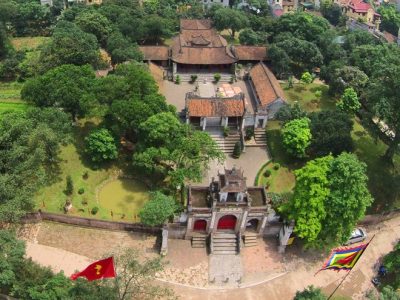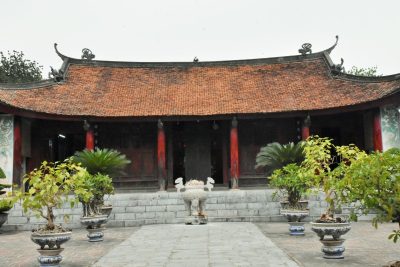
Co Loa Citadel is renowned for its historical significance and ancient charm. Archaeologists regard it as the oldest, largest, and most uniquely designed fortification in Vietnam's history. If you're visiting Hanoi, make sure to explore this remarkable site.
Co Loa Citadel is best visited in the fall (from August to October) when the weather is pleasantly cool. To experience traditional fairs, plan your visit on the 1st, 6th, 11th, 16th, 21st, or 26th of each month. The citadel is open daily from 8 am to 5 pm.
Co Loa Citadel’s rich history is marked by numerous significant milestones. Once the capital and now a revered cultural landmark, each chapter of its past highlights its lasting importance to Vietnam's heritage.

Archaeological studies have revealed the enduring structure of Co Loa Citadel, showcasing its impressive outer walls, middle walls, and inner citadel. These remnants offer fascinating insights into its historical grandeur. Constructed primarily from soil, stone, and broken ceramics, each wall is encircled by a moat that typically spans 10 to 30 meters in width. These moats interconnect and link to the Hoang River, creating a maze-like military complex. The strategic combination of the river, moats, and irregularly shaped walls made Co Loa highly effective for both offensive and defensive operations.
Legend has it that Co Loa Citadel originally featured nine spiral-shaped walls, of which only three remain today. The outer walls stretch for 8 kilometers, averaging 3 to 4 meters in height, with some sections reaching up to 8 meters. The unique construction method involved excavating earth to create the moats while simultaneously building the walls. The ramparts have steep outer faces and gently sloping inner faces, providing resilience against external attacks while facilitating defense from within. The bases of the ramparts measure between 20 and 30 meters wide, tapering to 6 to 12 meters at the top.
The middle walls exhibit an irregular shape with a perimeter of 6,500 meters and heights reaching up to 10 meters. On average, these walls are about 10 meters wide. Five gates are strategically placed to the east, south, north, northwest, and southwest, with the eastern gate providing access to the Hoang River.
The inner citadel is a rectangular fortification with walls oriented to the south, north, west, and east, featuring a single gate on the southern side. Surrounding the inner citadel are 12 symmetrical earthworks known as "Firebacks." Enclosing a perimeter of 1,730 meters, the inner citadel includes communal houses, temples, shrines, and altars, all reflecting Vietnam's rich cultural heritage.
Activities to Enjoy During Your Visit to Co Loa Citadel

During your visit to Co Loa Citadel, you'll be enchanted by its numerous ancient temples, each offering a profound insight into Vietnam's heritage and a tranquil space for seeking blessings.
Beyond Co Loa Citadel, Vietnam is filled with captivating destinations. Wander through Hanoi's lively streets, cruise the towering limestone cliffs of Ha Long Bay, or relax on the serene beaches of Nha Trang. Discover Hoi An's charming lantern-lit lanes, explore the sandy dunes of Mui Ne, or venture to the mountainous beauty of Ha Giang. For peaceful escapes, head to Da Lat's cool highlands or the misty terraces of Sa Pa. Unwind on the pristine shores of Phu Quoc and Cat Ba or enjoy the crystal-clear waters of Co To Island.
To facilitate a smooth travel experience, we provide comprehensive Vietnam visa services, ensuring that your journey to Co Loa Citadel and other incredible destinations is effortless and enjoyable.
We provide fast Vietnam tourist visa services in as little as 1 hour